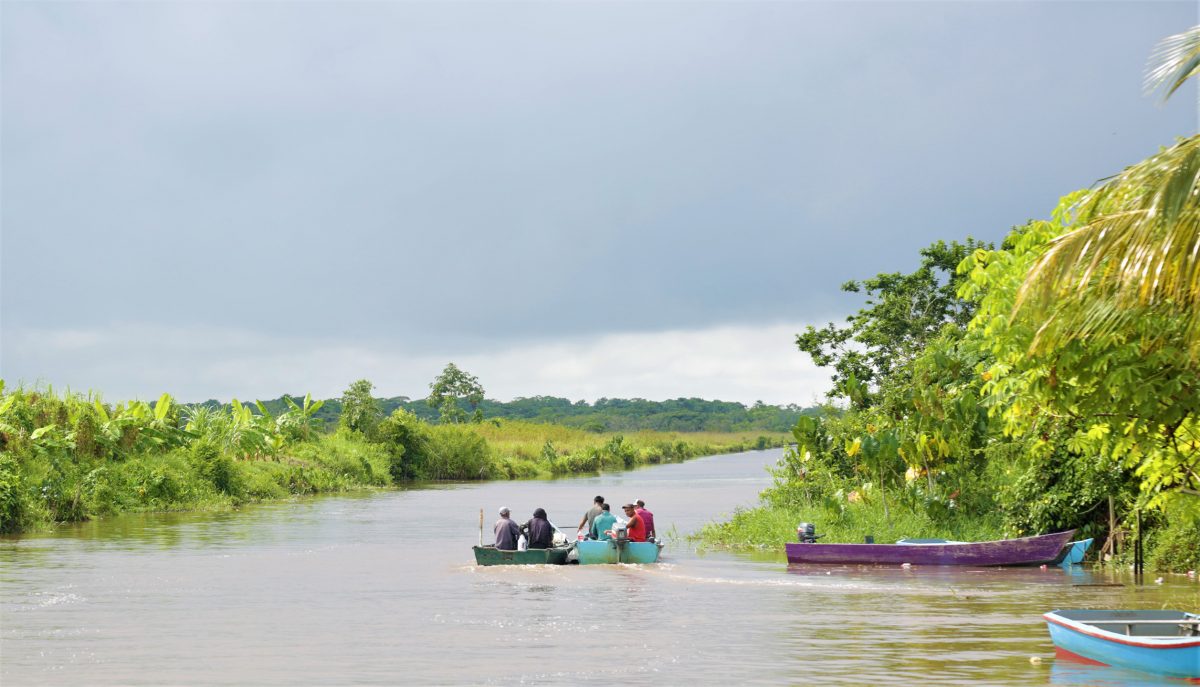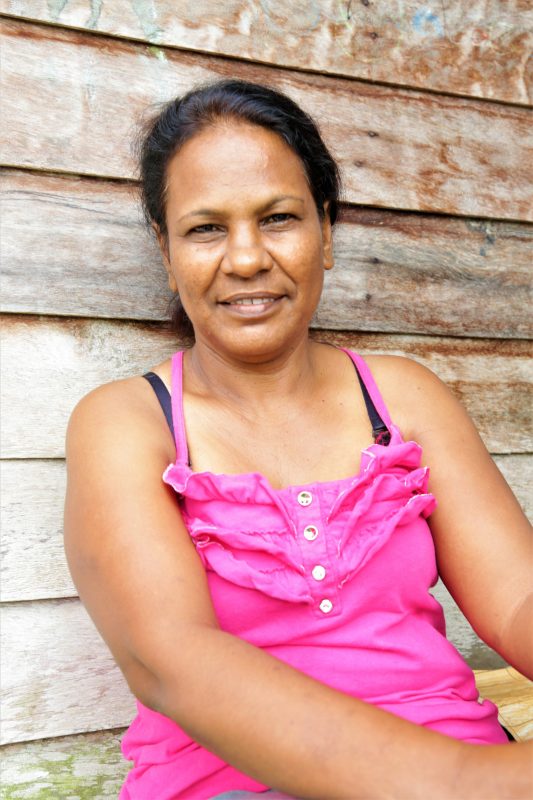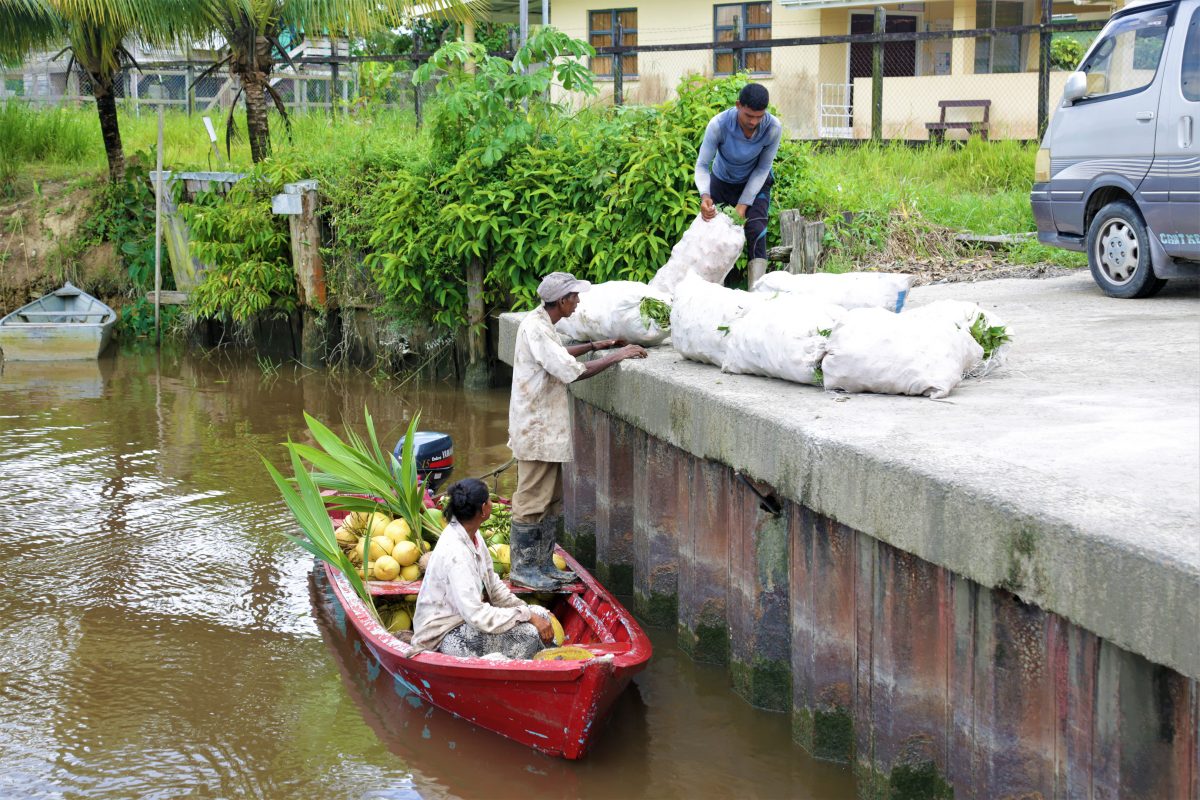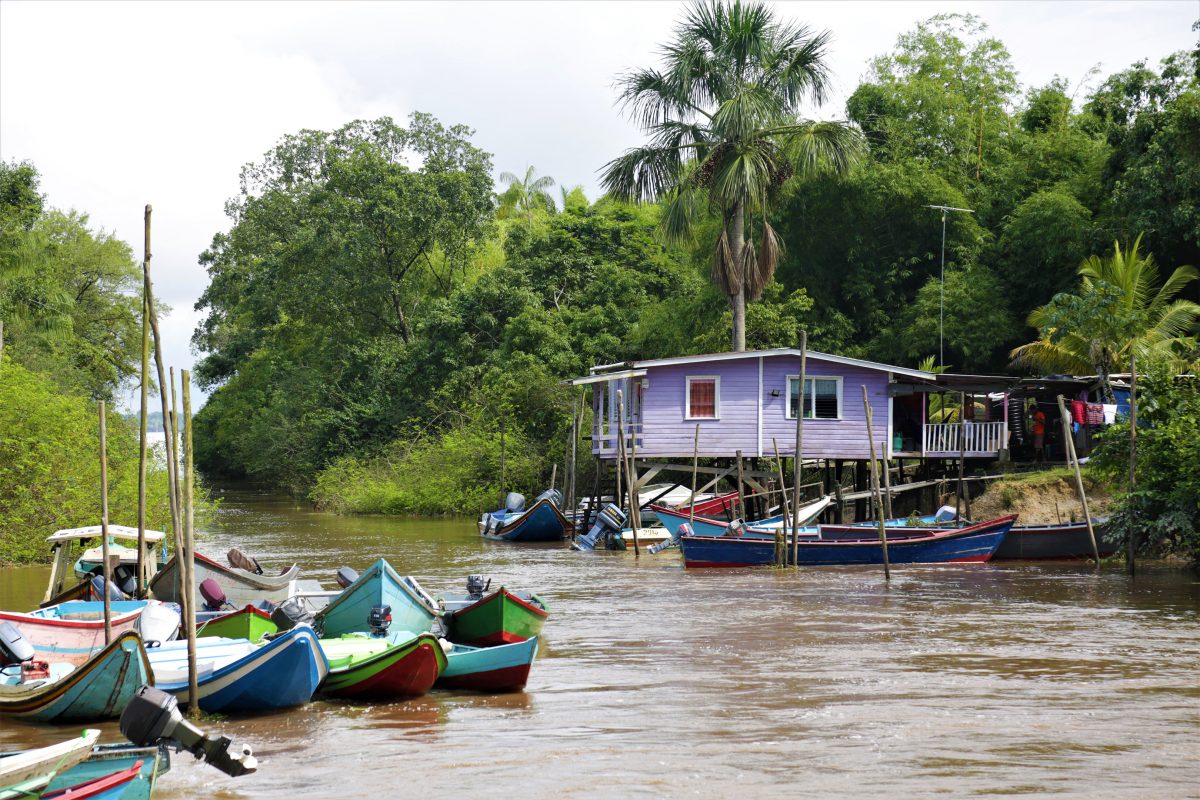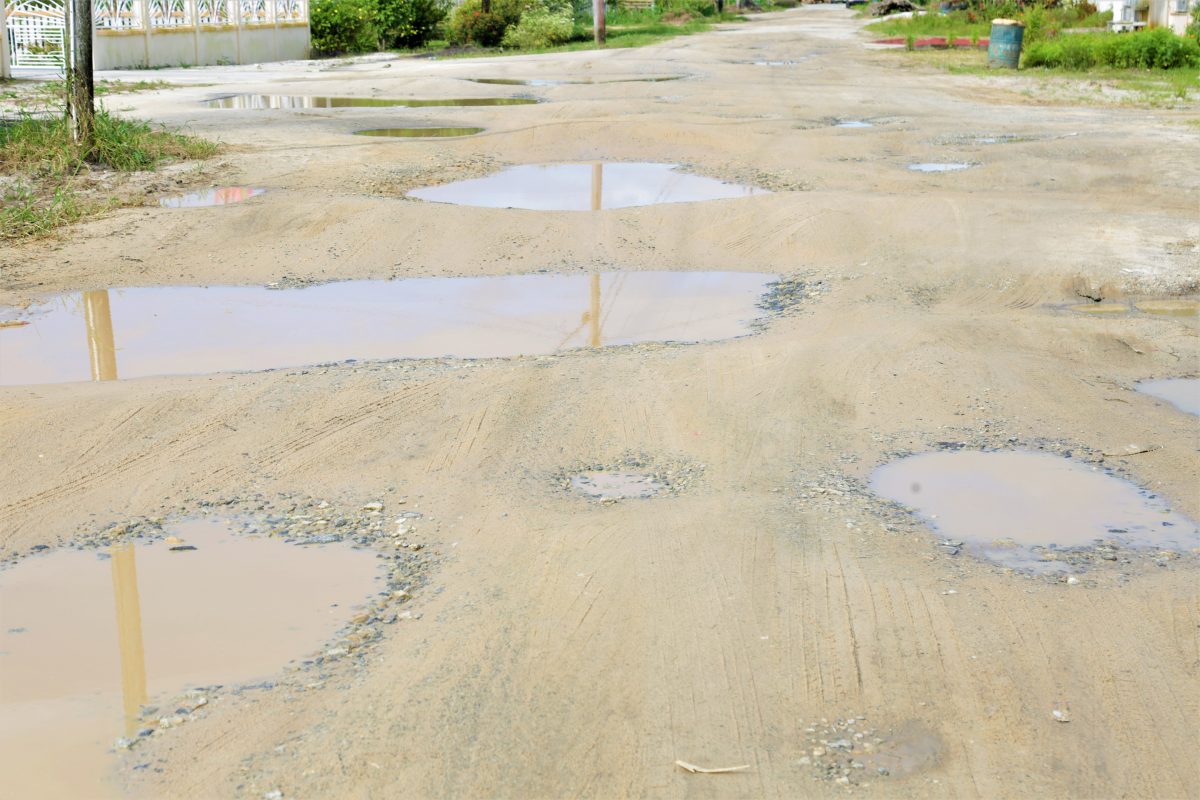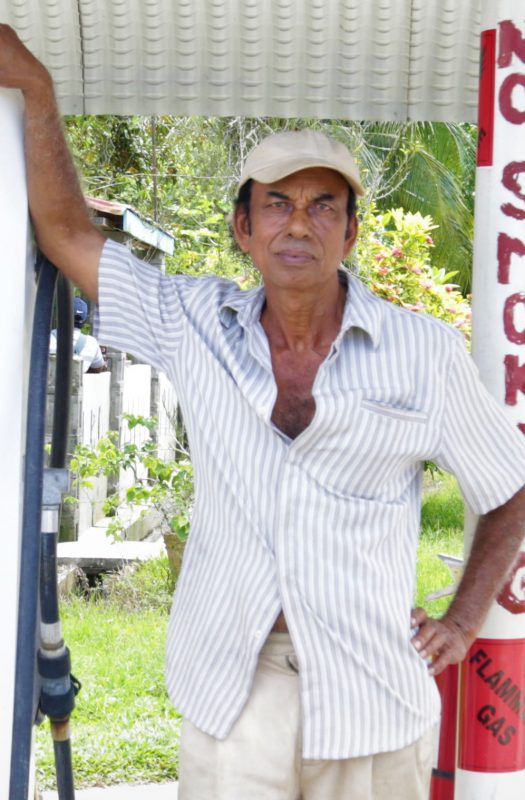St Lawrence is in the Parika, East Bank Essequibo area, between Present Hope and Hubu and opposite Hog Island.
The villagers depend mainly on farming for their livelihoods. It was early morning when I visited, but everyone was out and about. Farmers, shopkeepers, boat captains, the pump attendants at the gas station, drivers, the popsicle and hotdog sellers, porters, labourers and security guards, everyone was busy. I was told that at one point, men in the community worked at the sawmills but once they realised that they had more time for themselves with farming, they went back to the land. They plant mainly ground provisions, though there are two farmers who have gone into fruits and coconuts.
Farmers make their way to and from the backdams using the main canal that separates St Lawrence from Hubu. The drain was dug in 1953 through the Boerasirie Extension Project. St Lawrence begins from the Hubu Koker. The port at the koker was established during the contraband days and was constructed to allow the landing of contraband goods. At the koker on St Lawrence’s side, a porter fetched soft drinks and other goods from a Canter and handed them to a man in a boat. The goods were being taken to a village called Lanaballi. Nearby, families sat under a shed near a shop waiting for boats to take them to their respective destinations: Hog Island, Fort Island, Lanaballi, Morasi, Saxacalli and Bonasika Creek.
Some children were running errands, while others, particularly the younger ones, played. One boy navigated his bicycle into the ponds in the road. It is a standing joke that the St Lawrence residents who in the yesteryears kept their ponds in the back of their lands, had moved them to the roads. No one refers to these craters as potholes anymore.
‘Setting the record straight’
Lionel Seepersaud is referred to by many as “Sir Archie” because he taught for a number of years at Blake Primary and St Lawrence Primary. He decided to set the record straight on the road and the location of the village. “St Lawrence begins from the koker to just about the St Lawrence School area. The road leading into here or the end of the accessible road was Hubu back in the day and so all the villages after Hubu was referred to as Hubu. Then, when C N Sharma started coming into this area, any point beyond Parika he labelled as Hubu Backdam… he never go in the backdam you know. This is the riverside front we live at; backdam is at the back.
“St Lawrence was owned by two brothers, Henry Lanferman and Samuel Lanferman. They were Amerindians. I am a descendant of the Lanfermans,” Seepersaud said.
He owns the gas station in the village, which serves St Lawrence and neighbouring villages along with the riverain communities. There are two other gas stations along the riverside, Seepersaud said, before adding that he is happy that there are other gas stations and he does not see them as competition as whenever he wants to close up shop and go on a vacation he does not have to worry about his customers not having access to fuel.
Prior to its current all-weather road, St Lawrence had what was called a ‘red rubbish’ road built from clay. To acquire enough clay to make the road, labourers raided their backyards, which left huge holes that later filled up and became ponds. The water in the ponds was used for everything except drinking; rainwater was used for drinking.
As a boy, Seepersaud attended St Lawrence and Blake Primary schools and Sarswat High School. St Lawrence Primary, he said, has evolved over the years. The first structure was a thatched roof, then it was made of wood. Today it is a concrete building. He has photographic records of what the buildings looked like. At the time he attended the school, it was the wooden structure.
Seepersaud is a member of the Christian Catholic Church. He shared that there are two Christian Catholic churches in Guyana—one in Corentyne, Berbice and the other in his village. The Christian Catholic Church, he explained, is different from the Roman Catholic Church. His church does not say Hail Mary or burn incense, he said, but believes in God, the Son and the Holy Ghost and does baptism by submersion. The church is the only place of worship in St Lawrence.
Asked whether he holds any position in his church, Seepersaud said he preferred to stay a regular member rather than take up any post. His mother, who is the eldest resident of the village at 95 years old, was at one time the Sunday School teacher. “I was always dragged to church as a boy. My mother was the Sunday School teacher for about 50 years and when the other boys playing cricket on the road, I got to get myself in church. I could never pay attention to the pastor; I was always thinking about my friends playing. So, church has never really interested me to that extent, but I’ve always been in church and I’m still there. Pastors would come and go, and members would come and go but I’m still there,” he chortled.
St Lawrence serves as a stopping point for students travelling to secondary schools. Children travel by boat from Morasi and Bonasika Creek to go to their respective schools. Seepersaud remembers many years ago that there was a girl who travelled from Fort Island to attend Queen’s College every day. He said her parents had a business in Georgetown. During the day he kept watch over their boat and at night they left their vehicle at his place. The children arriving at St Lawrence today would get transportation out of Hubu Road once they arrive in the village.
“We need a proper road and better water supply,” he said. “Right now, many persons not using the water because they can’t use it, they have to use the rainwater instead. We were getting water from the plant in Hubu, but it was really bad. Then they connected us to the plant in Vergenoegen and the treatment plant there was better, but the water was barely coming and then it was coming at only a trickle. We had to wait until late in the night before we could get any sort of water.
“We made representation and they decided to connect us back to Hubu and put a treatment plant there. Dr [Richard] Van West-Charles [Managing Director of Guyana Water Incorporated] came down and we had a meeting and he promise to put purifier within the next week, but couple months finish and his promise hasn’t been fulfilled.
“The water is the same water. The water rusty and smelly; people decided to turn off their water. We wrote a letter and people sign it asking them to waive the water rates because we’re not using it.
“They should reconnect us to Vergenoegen; we were getting a little water but at least it was better because now you can’t use it at all. So, water is one of the needs we have and the road… The amount of meetings we had and the amount of feasibility studies, they could have done from here to Trinidad. They talk all the time and no action.”
Return to water, electricity woes
At the shop where people waited for boats, a young man sat in a hammock. He was assisting his mother, Debbie Persaud, who is the proprietor of the shop, but who had gone home to rest having been up all morning making snacks to sell.
She was born in Hubu but grew up in St Lawrence. When she was 18 years old, she migrated to Venezuela. “When I left here, we didn’t have electricity and water,” she told me. “Is only [several] years now since we get that. When I had lived in Venezuela, we had electricity and water for free there. I enjoyed the good times there. After living there for 13 years, I separated from my [partner] I come back to live in Guyana with my two daughters and my son. My younger daughter is in Mexico on a scholarship doing engineering and my elder daughter, she studied medicine in Cuba on a scholarship; she is now a doctor in Berbice at the New Amsterdam Hospital. My son, he is a school dropout, so I have him in the shop helping me.”
Persaud said that having made the move back to St Lawrence she had to get reacquainted with the life of no potable water or electricity. She had gotten so accustomed to having the fan on all night when she lived in Venezuela that many nights, she sat up fanning herself and her children with a piece of cardboard. Her children had grown up eating arepas and other Spanish dishes and it was difficult to get them to eat vegetables and rice.
In 2002, a year after her return, Persaud began selling egg balls at the side of her parents’ shop. She started with 10 egg balls and sold one for $50. Initially, her parents assisted by providing all the meals for the family until she could earn enough. Her 10 egg balls have grown to 40/50 daily and she also makes pholourie, channa, fish balls and chicken balls. She later decided to set up shop at the wharf. Persaud decided to build a shed that would protect her from the rain, but she made it larger to also accommodate persons waiting for the boats to the islands.
A normal morning finds Persaud at the stove at 2.30 preparing the dishes. She opens her shop at 6.30 am. Speaking of how safe it is to live in the village, Persaud said sometimes they leave cartons of soft drinks and beers outside and nobody makes off with them.
“The water is one of the biggest challenges here,” she said. “It comes rusty and doesn’t smell good but with the rain falling a lot now we don’t even worry about the pipes. Everyone around here have black tanks. I would like for the road to be fixed. I don’t have children in school, but I’d like to see they put in a computer hub for the children here.”
Persaud, however, said that she will be moving from the village as she has obtained a plot of land at Zeelugt, where she is currently building. She quickly added that she will still be in St Lawrence every day at her shop as she does not intend to move her business.
